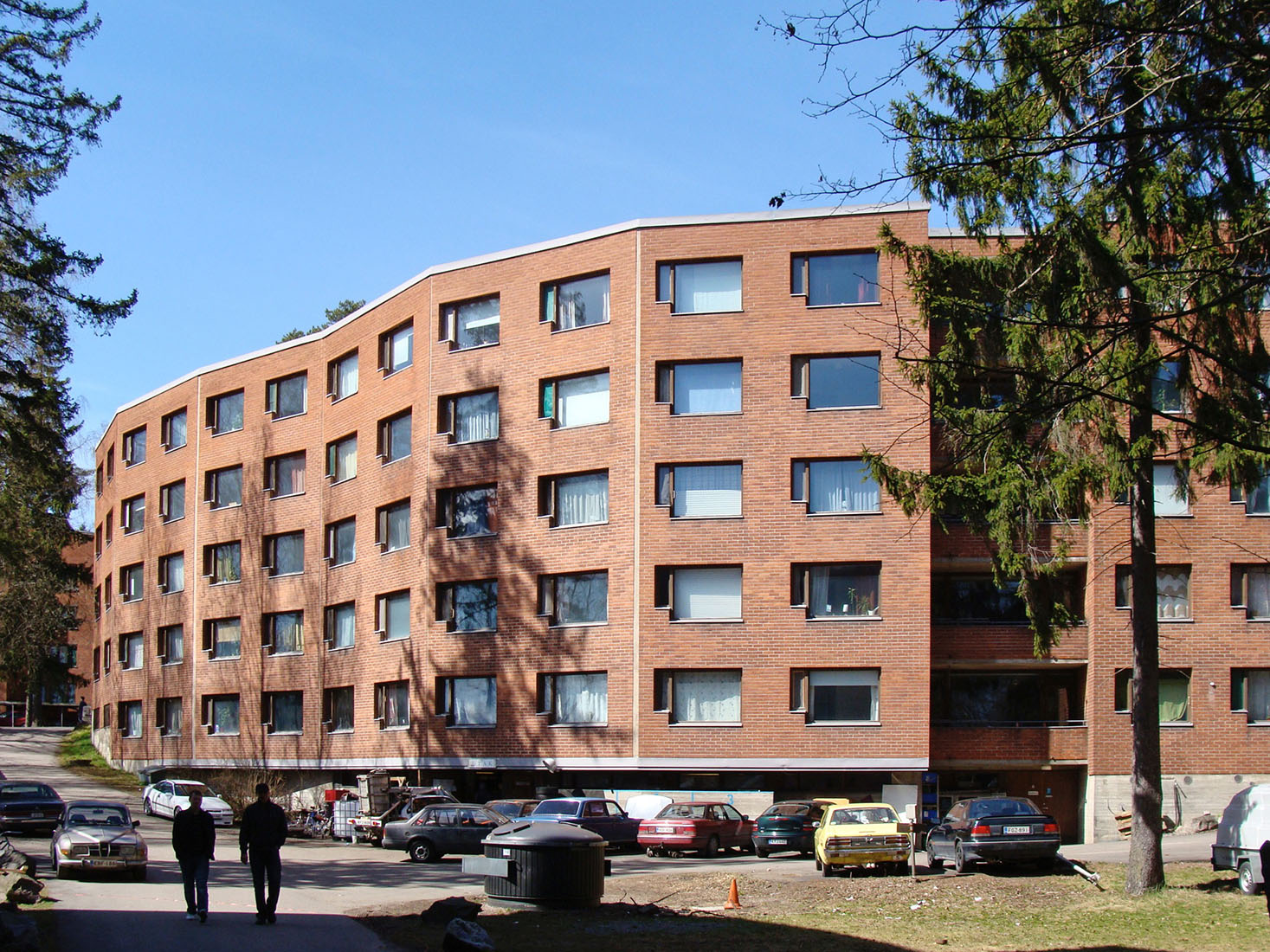 |
 |
 |
 |


University of Technology
TKY2 Student Dormitory
Jämeräntaival 1, Otaniemi (Helsinki)
1963 - 1966
The Competition for the Otaniemi University of Technology Campus from 1949 was won by Alvar Aalto together with his first wife Aino Aalto. Their competition proposal envisioned a standard residential building type for the student village, which should be located on a forested cape. This standard building consisted of three point blocks, linked by corridors. An idea which was implemented in the 1950s by some architects of a younger generation. Alvar Aalto developed a new design for a four storey student dormitory in 1962. This design consists of linked cells appearing like a combination of the curved wall of the MIT dormitory and the fan-volume of the Neue Vahr block. This project was implemented in a reduced and adapted form, design for which started in 1963. The building was completed in 1966 and remained the only residential building by Alvar Aalto for the Otaniemi campus. The realized flat-roofed volume is V-shaped and tripartite, consisting of two linaear blocks, linked by a curved wall-like central section. The height of the building is adapted to the topography, varying from three to five storeys. The main entrance is located in the shelteded inner area of the V-plan, where the two wings meet. A low vestibule space is lit by barrel-like skylights. This space contains the reception desk, the necessary offices, telephone facilites and a cafe. The organisation of the collective housing, the so-called TKY-2, is rather simple. The dormitory features a total of more than 200 rooms. Access to each group of cells is made by a separate stairwell. Each group consists of four, seven, nine or ten rooms. Every room was equiped with its own shower and toilet. In the linear wings the rooms are gathered along a central corridor with common spaces opening up into the corridor, while in the curved part the corridor expands as a consequence of the geometry, creating the common rooms. Each of this common rooms is associated to a group of rooms and has its own kitchen. In this building the exigence for privacy and communality was studied with great care. During the desing process a possible use as a hotel was taken into account. On the exterior the building follows the principle of the Otaniemi Campus, consisting mainly of red brick. The repetition of the same window is a consequence of the linked cells, and is an expression of the inner structure. The elevations are structured into different sections by the bylconies of the common rooms.